LED illumination design includes understanding the electrical drive slice of the lighting pie.
Chris Richardson, National Semiconductor Corp.
LED lighting offers many potential benefits over incandescent, halogen, fluorescent and gas/arc lamps, and lighting designers are eager to take advantage of those benefits. Although it is the market for retrofitting that is immense, it is the ground-up design of solid-state lighting that exhilarates the lighting design community. For an LED lamp design to be successful, three major aspects must be managed carefully: the electrical drive, the thermal energy and the optics. Successfully balancing all three can produce solid-state lighting with a long life, high electrical efficiency, high luminous efficacy and pure color (or tightly controlled color temperature for white LEDs).
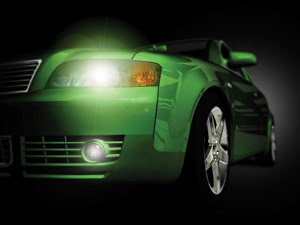
A single LED die intended for solid-state illumination generally is made from one of two semiconductor materials. Red, orange and amber LEDs are made almost exclusively from InAlGaP. Green and blue LEDs are made almost exclusively with InGaN. White LEDs generally are made from a blue LED with a conversion phosphor and, from an electrical drive standpoint, are identical to blue LEDs.
As do standard silicon p-n junction diodes, LEDs conduct current when they are forward-biased; however, unlike standard p-n junction diodes, LEDs in forward bias emit light. Unlike other lighting sources, LEDs are driven by current, and the forward voltage across an LED is low and is DC. The typical forward voltage, VF, ranges from 2 to 3 V for InAlGaP LEDs and from 3 to 4 V for InGaN, but the luminous flux of an LED is proportional to the forward current (IF). The first task of electrical drive design is fixing the drive current; the second is determining the voltage range of each LED. Careful review of the manufacturer’s data sheet will yield a recommended drive current, along with typical, minimum and maximum values for VF, dominant wavelength and luminous flux at the specified current (Figure 1).
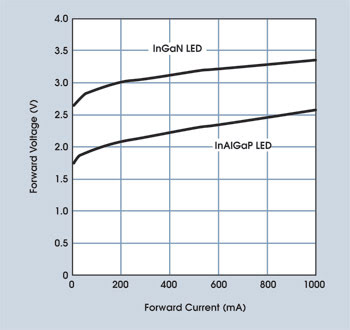
Figure 1. Graphs of typical forward voltage (VF) vs. forward current (IF) clearly show that current control is the key part of an LED driver. This data was generated for a red InAlGaP and for a white InGaN LED.
Choosing an array design
Even with the leaps and bounds that have taken place in power LEDs in recent years, a single device rarely is enough to provide all the light needed for general illumination. A flagship 1-W white LED (typical correlated color temperature of 6500 K) from leading manufacturers may yield 100 lm, which are distributed over a relatively narrow angle in comparison with a typical 60-W incandescent lightbulb. With a typical luminous efficacy of 15 lm/W, the lightbulb yields 900 lm, with the light spread almost equally in all directions. More than one LED will be needed if the goal is to light a space formerly occupied by the lightbulb. Placing the LEDs in series guarantees that the same current flows through each device and is the best way to ensure uniform light from each individual device.
In general, as many LEDs as possible are placed in series, and then further series chains are added until the total light output reaches the desired level. The number of LEDs that can be placed in series depends upon several factors but primarily is dominated by the input voltage, electrical codes and safety standards, along with the LED driver itself.
Arranging LEDs in a single series chain has the advantages of using a single LED driver and a guarantee of equal current flowing through each LED (Figure 2). As a drawback, this configuration leads to the highest output voltage, which translates into larger, more expensive circuit components and more safety requirements. In addition, if any of the LEDs fail and create an open circuit, the entire lamp goes dark.
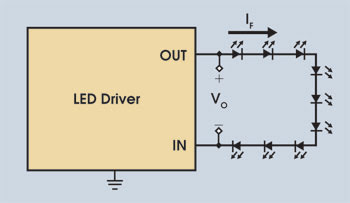
Figure 2. A single series chain is a simple way to control the current in all the LEDs.
Arranging the LEDs in a series-parallel array has the advantage of using a lower output voltage and of reducing the hazard of electric shock (Figure 3). If one LED fails, opening that branch of the circuit, the other branches continue to operate; however, this can be both beneficial and harmful. On one hand, a failure of one LED will not disable the entire lamp. On the other hand, the LED driver, being a current source, now will force more current into the remaining branches, causing the LEDs to overheat and, therefore, reducing their lifetime.
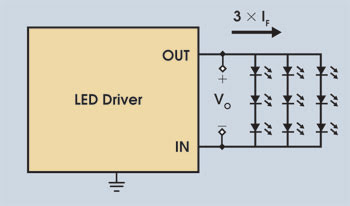
Figure 3. Arraying the LEDs in a series-parallel manner has both advantages and disadvantages.
A second disadvantage of the series-parallel array is that the LEDs will not share the drive current equally unless their VF is matched. This requires them to be binned by the manufacturer and increases their cost. Finally, even with VF binning, the negative temperature coefficient of VF in LEDs can cause an imbalance in the current from branch to branch if the lamp design does not provide equivalent heat sinking for each LED.
A conservative method is to use independent drivers for each LED string, which provides the greatest system reliability but costs the most and uses the most space (Figure 4). Using separate drivers not only keeps the output voltage low but also does not require VF binning, and the lamp can maintain some light output even if multiple LEDs in different strings fail. If the LED drivers are switching regulators, the cost and footprint of three drivers, in addition to the passives that surround them, can be excessive.
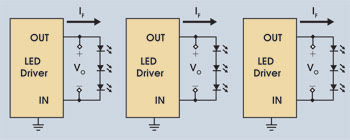
Figure 4. An approach using multiple drivers is reliable but adds cost.
Driver details
System input voltage requirements and good driver selection are critical to circuit performance. These topics are covered in detail in the expanded online article at www.national.com/see/photonics.
The first generation of high-power LED drivers, both modules and integrated circuits, is now more than three years old. Leading manufacturers have completed their second generation of products based on what they learned from the first and are designing future generations of high-power LED drivers to tackle the new problems that have arisen as LEDs push into the field of general illumination. To complete a successful design, both lighting designers and LED driver manufacturers (modules and integrated circuits) must take a step across the void that often separates them. The integrated-circuit makers must listen and produce products that solve current challenges, and the lighting designers must become more fluent in electronics. With these steps taken, high-quality, high-efficiency and long-lasting LED lighting will become a reality.
Meet the author
Chris Richardson is staff applications engineer at National Semiconductor Corp. in Santa Clara, Calif.; e-mail: [email protected].